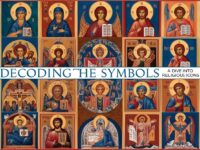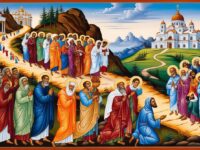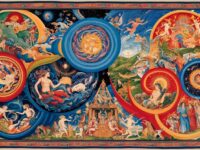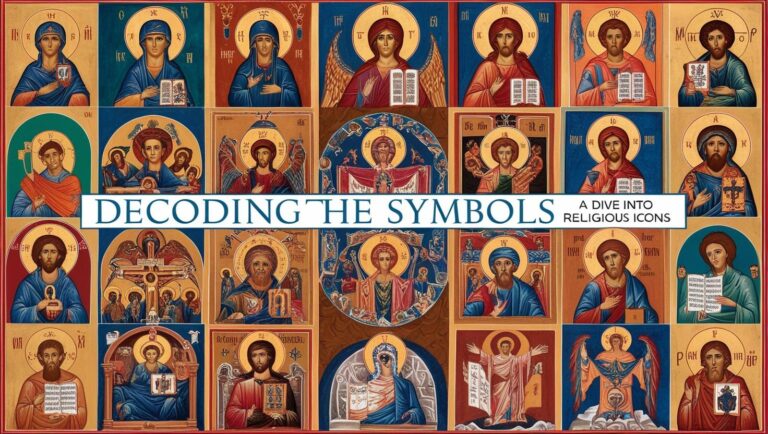Religious icons have served as bridges between the earthly and the divine for centuries. These symbols are not just mere artistic expressions; they are profound statements of faith, identity, and cultural heritage. As we delve into the world of religious icons, we uncover layers of meaning and historical context that reveal much about the societies that created them. This exploration takes us beyond the aesthetic to uncover the rich tapestry of beliefs and narratives woven into every stroke and figure.
Unlocking Secrets: The Art of Religious Icons
Religious icons, with their vivid colors and intricate details, are a feast for the eyes. At first glance, they may appear as simple depictions of sacred figures, but a closer look reveals a wealth of hidden messages and symbolic meanings. These works of art have been crafted with precision and purpose, often adhering to strict guidelines passed down through generations. This adherence ensures that the faithful can immediately recognize and connect with the spiritual figures represented, whether it’s the serene face of a saint or the majestic presence of a deity.
The creation of religious icons is an art form that requires not just technical skill but also deep theological understanding. Iconographers, the artists behind these spiritual masterpieces, undergo rigorous training to ensure their work accurately conveys religious teachings and values. Traditionally, the process of making an icon is a sacred ritual in itself, involving prayer and meditation. This spiritual preparation is believed to imbue the artwork with a divine presence, transforming it from mere paint and wood into a conduit for worship and reverence.
Despite the variations in style and medium, religious icons share common elements that transcend cultural and geographical boundaries. For example, the use of gold leaf to signify divine light or the positioning of figures to convey a narrative are techniques found in both Eastern Orthodox and Roman Catholic traditions. This universality underscores the role of religious icons as visual theologians, providing insight and understanding to believers across the globe. As we unlock the secrets of these artistic creations, we gain a deeper appreciation of the faith and devotion that drive their existence.
Beyond the Surface: Meanings Behind Sacred Symbols
Beneath the vibrant hues and intricate designs of religious icons lie layers of symbolism that convey complex theological concepts and narratives. Each element, from the choice of colors to specific gestures, carries a meaning that contributes to the overall story the icon tells. For instance, in Christian iconography, the color blue often symbolizes divine wisdom, while red represents martyrdom and sacrifice. Such symbolic language allows believers to engage with their faith on a deeper level, transforming the icon into a visual sermon.
The gestural language in religious icons is another fascinating aspect that adds depth to their meaning. Hand positions, known as mudras in some traditions, can indicate a blessing, teaching, or protection, while the placement of figures within the icon can reflect their spiritual hierarchy or relationship to one another. These nuances offer viewers a dynamic experience that goes beyond mere observation, inviting them to explore the spiritual truths embedded within the artwork.
Across various cultures and religions, sacred symbols serve as powerful tools for communication and contemplation. In Hinduism, for example, the multi-armed depictions of deities are not just artistic flourishes but represent the omnipotence and multifaceted nature of the divine. Similarly, Buddhist mandalas use geometric patterns to symbolize the universe and the path to enlightenment. By delving into the meanings behind these symbols, we recognize the universal human desire to understand the divine and express it through art.
As we journey through the world of religious icons, we find ourselves not only appreciating their beauty but also gaining insight into the rich spiritual traditions they embody. These icons, with their intricate layers of symbolism and artistry, offer a window into the beliefs and values of cultures across the ages. In decoding their symbols, we connect with the timeless quest for meaning and the enduring human spirit that seeks to express the inexpressible. Whether viewed as objects of devotion or masterpieces of art, religious icons continue to inspire and captivate, inviting us to look beyond the surface and embrace the profound narratives they hold.

















